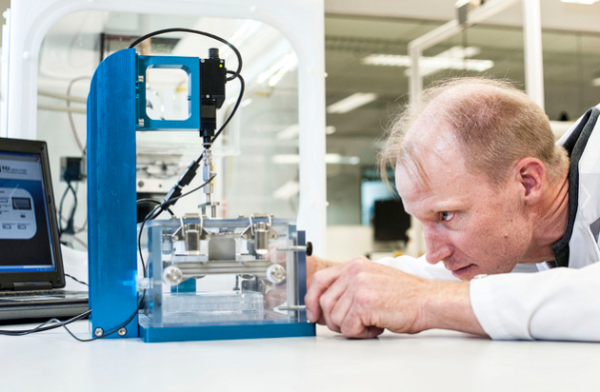The 3D bioprinting space, also known as biofabrication has been really heating up. It seems that every week we hear another story in which the technology is able to either save a life or make a life so much better. The  number of uses, as well as cases, that will eventually require bioprinting will only continue to expand as the technology matures. Because of this, there will be strong demand for jobs within the biofrabrication field.
number of uses, as well as cases, that will eventually require bioprinting will only continue to expand as the technology matures. Because of this, there will be strong demand for jobs within the biofrabrication field.
What many companies will begin to realize, is that there will likely be a lack in supply of those qualified for these new jobs. Four colleges, two in Australia, and two in Europe have decided to do something about this potential problem. They are launching the first ever program designed to provide a Master’s Degree in Biofabrication.
The four universities to offer this two-year master’s program are: the University of Wollongong in NSW, QUT in Queensland, the University Medical Center Utrecht in the Netherlands and the University of Würzburg in Germany. Students will actually receive two degrees once they graduate, one from an Australiania University and one from one of the two European schools. Each university plans to admit just 10 students to the program. They will graduate with a keen understanding of biofabrication, and leave with an expertise in the field.
“Graduates of the new higher degree will gain an international career and have the ability to lead this exciting medical revolution which is going to be particularly important for our ageing populations,” said Professor Hutmacher, who leads QUT’s biofabrication research.
Biofabrication or 3D bioprinting has already been used to replace bone, grow an ear, and regrow skin and human cartilage. As the technology progresses, many experts believe that there will come a time when an entire human heart or liver could be printed out for a transplant. Although these applications may still be over a decade away, these new degrees will give the researchers, doctors, and scientists of the future a major advantage if they choose to enter the field.
“Graduates will be at the forefront of an industry that will always be in high demand given the ageing of populations around the world and which cannot be easily replicated by any other country,” commented Hutmacher.
Applications will be open later this year for those wishing to enter the program. Are you considering applying? We would love to hear from you at the biofabrication forum thread at 3DPB.com
Subscribe to Our Email Newsletter
Stay up-to-date on all the latest news from the 3D printing industry and receive information and offers from third party vendors.
You May Also Like
Precision at the Microscale: UK Researchers Advance Medical Devices with BMF’s 3D Printing Tech
University of Nottingham researchers are using Boston Micro Fabrication‘s (BMF) 3D printing technology to develop medical devices that improve compatibility with human tissue. Funded by a UK grant, this project...
3D Printing Webinar and Event Roundup: April 21, 2024
It’s another busy week of webinars and events, starting with Hannover Messe in Germany and continuing with Metalcasting Congress, Chinaplas, TechBlick’s Innovation Festival, and more. Stratasys continues its advanced training...
3D Printing Webinar and Event Roundup: March 17, 2024
It’s another busy week of webinars and events, including SALMED 2024 and AM Forum in Berlin. Stratasys continues its in-person training and is offering two webinars, ASTM is holding a...
3D Printed Micro Antenna is 15% Smaller and 6X Lighter
Horizon Microtechnologies has achieved success in creating a high-frequency D-Band horn antenna through micro 3D printing. However, this achievement did not rely solely on 3D printing; it involved a combination...































